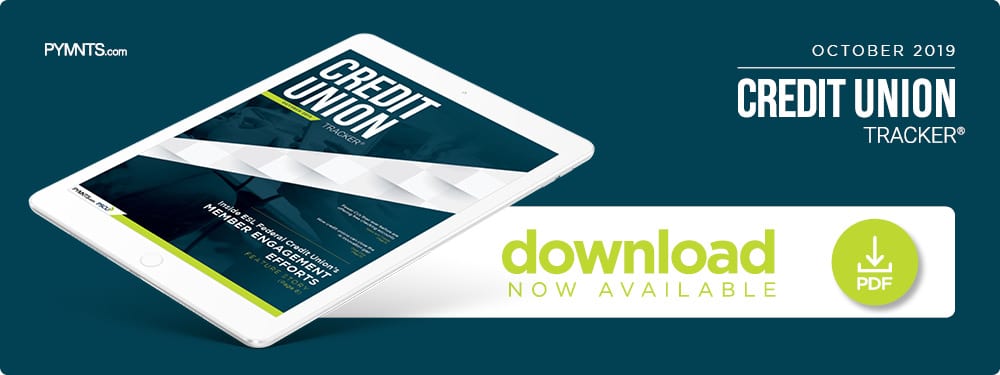Inside ESL Federal Credit Union’s Member Engagement Efforts

Nearly 40 percent of credit union members are willing to switch their primary FI – putting the pressure on CUs to up their game. This means that a data-centric approach to engagement and retention is more important than ever. In this month’s Credit Union Tracker, PYMNTS talks with Celeste Kier, director of customer experience for ESL Federal Credit Union, about how the CU uses a sophisticated feedback analytics system to identify and meet customers’ demands.
 Member engagement is key to any CU in the same way that customer engagement is important for any business: customers that regularly positively interact with companies are more likely to return.
Member engagement is key to any CU in the same way that customer engagement is important for any business: customers that regularly positively interact with companies are more likely to return.
The key to driving member engagement was blindingly obvious for the Rochester, New York-based ESL Federal Credit Union, one of the largest United States CUs by asset size: listen to members’ wants and deliver. The strategy sounds simple, but member communications can be easily lost or overlooked, and CUs may not have the resources to be as involved as larger companies.
“We’re in a rapidly changing industry,” Celeste Kier said, senior vice president and marketing and customer experience director for ESL. “Non-financial institutions are offering [financial] services to our customers. So, our challenge is to always listen — to understand what our customers want […] and create partnerships [and] long-term relationships [with them].”
PYMNTS recently spoke with Kier about how ESL considers customer feedback in its member engagement efforts and its tools to ensure it gathers useful and actionable feedback.
Customer feedback is easy as V-O-C
Central to ESL’s member engagement efforts is a voice-of-the-customer system (VOC), a common tool that interacts with individual members every day. VOC systems employ text analytics software to identify feedback trends and patterns, saving staff from reading untold thousands of member comments.
“What we use [the technology] for is to tell us if something is bubbling up, whether [the trend is] positive or [something] people want to change, and then we use that to dig in more,” Kier explained. “[It] might tell us we have to do more research, but sometimes the VOC system just points out a really simple thing, like ‘We’d like bike racks at one of the branches.’”
Other requests are similarly actionable. Many of ESL’s business customers requested the ability to transfer funds from their business accounts to their personal accounts and vice versa via ESL’s online banking site in one instance, and the CU instituted the feature shortly thereafter.
The VOC can process employee feedback in addition to comments from customers. Most employee notes are related to customer relations advice or other day-to-day operations, but the system also captures more unusual requests.
“One frequently requested item from our employees was the ability to purchase ESL clothes and other items,” she noted. “So we added an online ‘ESL store’, where our employees can choose items from branded shirts, hoodies, caps, mugs, water bottles and more.”
Digging deeper into customer demands
Often, the feedback that comes from the VOC system is contradictory, unclear or in need of further research. ESL combines VOC system data with several other streams, including research done by an in-house business intelligence team. These investigations can ultimately take multiple forms that range from brand perception reports to demographic studies for the business’ hometown of Rochester, New York.
“We’re currently building out a data warehouse to store data from all of our systems,” Kier said. “We use transactional data on product usage and service usage, and our intelligence team brings all of that together to make changes, design new products [and] understand what’s working and what we should adjust.”
Sometimes the right way to figure out customer desires is to go back to the source, however.
“We might look at specific [customer] segments and then do follow-up surveys to understand [further],” Kier explained. “When it comes to usage of a product, what do you like? What don’t you like? Why would you use it? Why would you not use it?”
Another vital tool in ESL’s arsenal is analysis of its Net Promoter Score (NPS), a common metric leveraged by most American corporations that surveys customers’ likelihood to recommend a product or service to acquaintances. This data is useful to identify services that drive customer loyalty and which cause pain points that reduce engagement.
The Amazon effect
The biggest challenge facing ESL’s member engagement efforts is not competition from other CUs, but rather companies entirely outside of the financial industry, so ESL cooperates with several of its competitors by sharing engagement trends and industry information.
“Companies like Amazon that do a great job of delivering through the mobile and digital environments really set expectations,” Kier explained. “So, we not only have to achieve expectations in our own industry, but as people are used to being, ‘I can just get what I want when I need it,’ we know that that’s what we have to enable.”
This phenomenon is common among CUs and other financial institutions (FIs), as they often lack the resources to match Amazon and other massive tech companies’ limitless product offerings and seamlessness.
“Our challenge is just a lot of keeping up with what our customers want to see from us,” she said. “But it’s a challenge that we enjoy.”
Advancing technology continues to alter both the CU industry and member expectations, and ESL will carry on investing in customer feedback and engagement.